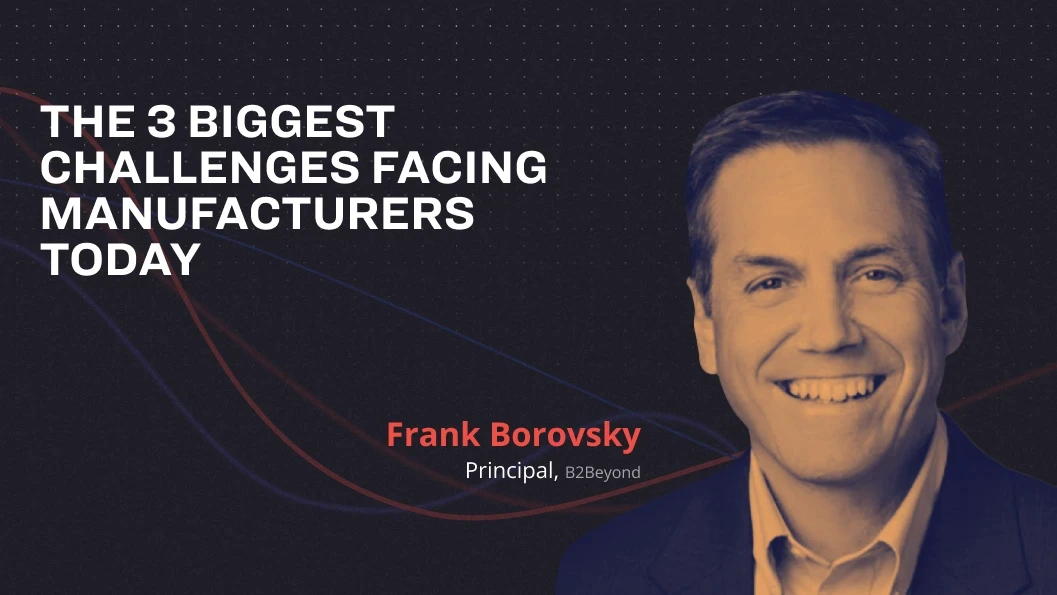Top 9 Sales Words To Close A Sales Deal
Feb 2, 2024
In the high-stakes world of B2B sales, the difference between a deal clinched and a deal missed can often come down to the words you choose. Imagine walking into a pitch, armed not just with facts and figures but with a lexicon designed to engage, persuade, and ultimately convert.
This is where the magic happens, and today, thanks to insights from Aviso AI, we're unveiling the secret playbook of sales phrases that can transform your sales approach from effective to extraordinary.
The Power of Sensory Words
Using sensory words like "feel," "visualize," and "hear" can make your product or service come alive for the client. By employing this method, you’re not just conveying information; you’re engaging the imagination, triggering emotions, and fostering a connection that goes beyond the transactional. It's a powerful way to make your pitch unforgettable and set the stage for a future where your solution is an integral part of their success story.
Suppose you're presenting a solution that streamlines project management. Instead of diving into the nitty-gritty features first, you start with a story:
"Visualize a day where your projects flow smoothly, deadlines are met with ease, and your team collaborates in perfect harmony. That's the future our platform offers."
Or, consider pitching a cutting-edge analytics dashboard. Saying, "Our platform offers comprehensive analytics," is one thing. But watch how it transforms with visual storytelling:
"Imagine logging into your dashboard and, at a glance, seeing exactly where your sales funnel is thriving and where it's leaking. That means you can swiftly pinpoint issues and deploy solutions, almost like having a GPS for your sales strategy."
In the above examples, you're not just listing features; you're invoking emotions and painting a picture of an aspirational future. This approach makes the information more digestible, engaging, and ultimately, compelling.
Crafting Positive Outcomes
Positive outcome words such as "success," "growth," "advantage," and "benefit" focus the client's attention on the potential rewards of doing business with you. These words show the positive changes your solution can bring to their business, making them more interested in what you're offering.
Imagine telling a prospect, "clients using our solution have successfully improved their win rate by up to 20%."
Or saying, "our analytics tool gives businesses a competitive advantage with real-time market insights.”
Each of these outcomes directly links your product to their success. This approach not only attracts prospects but also builds their confidence in the solution.
Highlighting Problems and Solutions
In sales, acknowledging the challenges your clients face is just as important as presenting your product as the solution. Words like "issue," "remedy," "problem," and "hurdle" play a crucial role in this process. They don't just describe problems and solutions; they create a roadmap from the problem to the solution, showing your clients you understand their pain points and have the means to address them.
Consider you're addressing a common challenge in the B2B space: too many point solutions. You might say, “Multiple apps and point solutions have added to the bloat for sellers. We help you eliminate these hurdles by offering a single pane of glass platform.”
This approach does two things: it shows empathy by recognizing the problem, and it positions your product as the direct path to overcoming this challenge.
For sales reps, this method is gold. It turns discussions into opportunities for connection and trust-building. When you articulate a problem your client is facing and then immediately present a solution, you're not just selling a product; you're offering a lifeline. This strategy demonstrates a deep understanding of your client's needs and showcases your product as the key to unlocking their potential for growth and overcoming obstacles in their path.
Words Signifying Ease and Simplicity
In today’s fast-paced world, where time is a currency as valuable as cash, offering solutions that promise ease and simplicity can be a major selling point. Emphasizing how your product can simplify the complex, streamline tedious processes, and integrate seamlessly into existing systems can be the difference between a closed deal and a missed opportunity.
Consider the power of stating, "Our solution cuts through the noise, offering a user-friendly interface that makes integration into your current system as effortless as flipping a switch." This kind of statement not only highlights the simplicity of your product but also directly addresses a common pain point: the fear of a complicated setup process.
Another compelling way to communicate this could be, "Imagine reducing the time you spend on task management by half. Our tool is designed with simplicity in mind, automating your workflows without the need for extensive training." Here, you're not just selling a product; you're offering a vision of a more efficient, less cluttered workday.
By focusing on ease and simplicity, you're speaking directly to the desire of every business to do more with less—to achieve greater outcomes without increasing their workload.
Indicating Financial Benefits
In the realm of B2B sales, the conversation inevitably circles back to one crucial point: the bottom line. Words like "savings," "deal," and "economical" are not just buzzwords; they are powerful tools that can shift the balance in a negotiation, compelling prospects to lean in closer. For sales reps, highlighting the financial benefits of your solution is key to making your proposition irresistible. For example,
"Opting for our service translates into significant savings, cutting your operational costs by up to 20% without sacrificing quality."
"By choosing our platform, you're not just getting an efficient solution; you're making an economical choice that ensures your investment pays off in record time."
These statements underscore the cost-effectiveness of your solution and positions it as a smart, long-term investment for your prospect’s business. It's about showing not just the immediate cost savings, but also the broader impact on the company's financial health. This approach can turn skepticism into confidence, making your solution the clear choice for any cost-conscious business looking to maximize its resources.
Suggesting Partnership or Collaboration
Words like together, collaborate, partner, and join can turn a simple pitch into a promise of teamwork and shared success. Using collaborative language turns the sales pitch into an invitation to a partnership, suggesting a relationship that extends beyond a mere transaction to mutual growth and success.
For example, saying to a prospect, “when you join us, you're not just signing up for a service; you're gaining a partner dedicated to your success." This approach shifts the perspective from a vendor-client dynamic to a partnership built on mutual trust and aligned goals.
Or, “by working together, we can tackle your challenges and push your business ahead." Here, the emphasis on "together" emphasizes the collective effort and shared vision, making it clear that their win is your win.
Weaving these phrases into your conversations, makes your message clear: it's about teaming up for the long run, not just making a sale.
Urgency-Inducing Words
Using words that create a sense of urgency makes potential clients feel like they need to act fast.
This is important because in business, waiting too long can mean missing out on opportunities. Making people feel like they need to decide right away can help speed up the sales process.
Incorporating urgency into your sales strategy is not just about pushing for a quick sale; it’s about crafting a compelling narrative that makes the prospect feel they’re getting the best deal by acting now. This multifaceted approach ensures your message is not only urgent but also richly appealing, addressing various motivations a client might have to delay their decision and effectively countering them.
For example, you could say, “secure your spot now to gain early access to our premium features!" This approach not only urges immediate action but also positions the offer as something special, increasing its perceived value.
Or, “act now to enjoy a full year of support at no extra cost." This tells clients exactly what they stand to gain by moving quickly, making the decision to act an obvious one.
In addition, words that suggest scarcity, like "limited availability," or "exclusive deal for the first 50 sign-ups," not only pushes for immediate action and highlight the unique benefits but also emphasizes that the opportunity is limited.
Using urgency in your sales pitch is about making sure clients know that the time to act is now, not later. It's a simple but effective way to get them to take the next step sooner rather than later.
Customer-Centric Words
In sales, the secret to making a lasting impression is to speak directly to the client's needs. Using words like "you," "your," "tailored," and "personalized" shifts the focus of your pitch directly onto the client, showing them you’re not just selling a product, but offering a solution designed specifically for them. By centering the conversation around the client and their needs, you not only make your pitch more engaging but also demonstrate a commitment to providing value that's as unique as their business.
A powerful way to connect is by saying, “we’ve crafted solutions that are tailored just for your business challenges."
Or, “your goals are our priority, which is why our services are personalized to help you achieve them."
These simple statements emphasize a direct connection to the client's specific situation, promoting a sense of exclusivity and attention to detail.
This customer-centric approach does more than just sell; it builds a relationship. It tells your clients that you see them, you understand their needs, and you're here to help fulfill those needs in a way that's just for them. It’s about making every client feel like they're the most important part of your business because, in truth, they are.
Highlighting the Perils of Inaction
Addressing the potential risks and consequences of inaction can be a delicate yet powerful part of the sales conversation. Words like "peril," "threat," "exposure," and "susceptibility" can indeed serve as a wake-up call for clients, pushing them towards realizing the importance of moving forward with a solution. They're not intended to alarm but to underscore the urgency of addressing current challenges with proactive solutions. This method helps clients grasp the importance of making timely decisions to safeguard or enhance their competitive position.
However, the key lies in using these terms judiciously to inform rather than intimidate.
One effective strategy is to incorporate these words when sharing success stories or case studies from other clients. For instance, you might mention, "In a recent case, a client faced significant vulnerabilities due to outdated systems. Their journey to adopting our solution helped mitigate these dangers, transforming their operations and securing their data."
By framing these terms within the context of third-party experiences, you're not directly imposing the negative outcomes on your prospects. Instead, you're illustrating a narrative that allows them to see the parallels in their situation without feeling targeted. This indirect approach encourages prospects to internalize the message and discuss the implications with their teams, fostering a collective recognition of the need for action and, ultimately, facilitating the sales process.
Conclusion
The art of sales is not just in the pitch; it's in the profound understanding that behind every business transaction lies a human decision. By speaking a language that appeals to the senses, outlines clear benefits, solves problems, simplifies complexities, offers value, invites collaboration, prompts action, focuses on the customer, and underscores the importance of timely decisions, you tap into the core of human motivation.
By integrating these strategic phrases into your sales approach, you're doing more than selling a product or service; you're offering a promise of transformation. You're not merely answering the question of "What’s in it for me?" but doing so in a way that ignites the imagination, builds trust, and fosters a partnership destined for success.
As you move forward, remember that each conversation is an opportunity to apply these principles, to turn interactions into engagements and engagements into partnerships. The right words can indeed seal the deal, but more importantly, they can open doors to new possibilities, new horizons, and unprecedented success.
So, let's not just communicate; let's connect. Book a demo with Aviso today!






